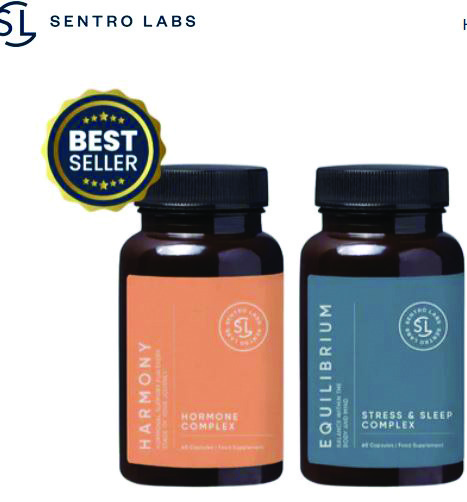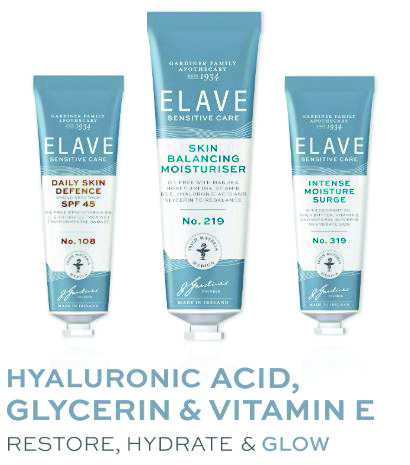It’s October….time for hot chocolates and snuggly pj’s. It’s chilly but not too cold; perfect for strolling in the fields with Andean Alpacas. These beautiful animals are calming and therapeutic. Andean Alpacas, in Westmeath, have packages where you can simply go walking with the Alpacas or you can choose their Halloween package, to spend time with the Alpacas and enjoy pumpkin carving and other Halloween activities. See https://andeanalpacas.ie/
My husband and I spent a few days in Farnham Estate Cavan recently, enjoying woodland strolls and the warm outdoor pool, which is surrounded by green fields. Farnham have great offers on breaks and spa days/treatments. We highly recommend Cedars Steakhouse Tomahawk steak for 2, it’s a memorable dining experience. See https://www.farnhamestate.ie/?src=mams
This month The National Concert Hall has wonderful family friendly concerts and events, see www.nch.ie Wax Museum Plus has interactive events and kids can make a wax model of their hand to bring home! See https://waxmuseumplus.ie/
Adventure Light returns to Skypark this October. Wander the Magical Trail, Conquer the Maze, Bounce on Skynet, Hunt for clues and Make a Wish and Enjoy delicious street food. Bring the whole family to this interactive experience. See https://skypark.ie/adventure-lights/
For a little treat, The Gem Treatery in Balbriggan is a must visit. Fluffy pancakes, yummy crepes, tasty sambos, delicious coffee, acai bowls and so many flavours of ice cream to choose from. Spacious and child/baby friendly, it’s perfect for catching up with family and friends. They also do kids birthday parties! See https://www.gemtreatery.com/?src=mams
Fancy a scare? The new Conjuring movie is brilliant. Expect screams and popcorn flying everywhere! We saw it with our teens at Arc Cinema and really enjoyed it. There are lots of good kids movies on and kids clubs are excellent value during midterm. See offers at https://arccinema.ie/
Now is the time when many of us succumb to colds and flus and it’s good to boost your immune system. For adults, Sentro Labs has excellent supplements for gut health and support women in perimenopause. I find them very good to help with sleep. For kiddies, Tonstix are absolutely brilliant. It’s a lollipop they suck that helps enormously with sore throats. Such a clever product range, see https://tonstix.com/
Stay safe and Happy Halloween from mams.ie!



By Dave Kavanagh
A difficulty that occurs when planning ahead to protect you and your family’s financial future, is the fact that we don’t know exactly what the future holds. Will jobs and income change? How long will I maintain good health? Will I win the lottery jackpot in the next 3 years? The uncertainty of the future means that we often plan for a variety of occurrences. One important aspect of this planning is deciding on a term for things like Life Cover. A life cover plan can either be done for a specific term or it can be done as a “whole of life” plan. One of the problems with the old way of doing these was that the premiums were reviewed after a few years and could result in constant, substantial increases, often forcing people to either cancel them or accept a much lower level of cover. With “guaranteed whole of life” plans, you at least know exactly what the premium will always be and the level of cover but planning that far ahead can be costly. A relatively new method of dealing with this issue was introduced from one of the life companies, and it is an addition called “Life Changes Option”. This option gives the policy owners a number of choices once they have paid premiums for at least 15 years. They can then choose to either; a) Stop paying premiums and reduce the level of cover which stays in place until the cover is paid out, or b) Cancel the cover (if it is no longer required) and take a refund of up to 70% of all premiums previously paid, or c) Continue the plan as it is with the same level of cover and premiums. This option has become quite popular when people are looking to future-proof cover as it offers choices that can suit people’s changing circumstances. If they have cleared loans and have sufficient savings, a reduced level of cover might be ideal. If they have strong pensions and savings, they may no longer have a need for cover and can take back a lump sum. For more information on how this type of cover may suit you, ask your advisor or contact me for a free quotation.
Dave Kavanagh QFA has been advising people financially for over 25 years. For quotes or information (with no cost or obligation) he can be contacted by emailing info@financialcompanion.ie or use the contact form on www.financialcompanion.ie or @Davekav_advice on Twitter and Instagram. Combined with his previous role of gym/nutrition adviser, he regularly gives talks and workshops at seminars and events for groups, companies and government departments on financial wellbeing, positivity and motivation. As heard on RTE 2FM , LMFM and TV3. wellbeing, positivity and motivation. As heard on RTE 2FM , LMFM and TV3.
The following is an extract from Mike Power’s forthcoming book - Swords: History and Mysteries… A Community Guide
Despite being situated solidly within the ‘Pale’(‘Pallium’ latin=A Fence) the spirit of Irish nationalism was never quite extinguished in Swords and Fingal…Swords folk contributed to every insurrection in Ireland, most notably in 1916, when the Fingal brigade of the Irish Volunteers led by Captain Richard Coleman of Main St. fought bravely in the engagement in the Mendacity Instit, Dublin.Swords folk can be very proud of it’s long and honourable tradition of nationalism, often carried out in the face of great opposition from the authorities. Fingal Abu !
‘Fingal has done more than its share in Ireland’s republican cause…’
Eamonn de Valera 1940
Easter Monday 1916 in the village of Swords dawned fine and dry. The Taylor brothers Tom, Joe and Christopher left their home in Taylors’ pub, Main Street, and headed out toKnocksedan bridge, half-an-hour’s walking at their brisk military pace. While confused by Eoin Mc Neill’s letter in the Sunday Independent to stand down, they still held to Captain Richard ‘Dick’ Coleman’s order:
‘We meet at Knocksedan Bridge on Monday, Ok?’
Their new boots chafing their feet as they strolled, going up the Brackenstown Road, they met Christopher ‘Kit’ Moran.
‘Is it still on?’ he asked, the others, saying nothing, walking stolidly ahead.
Kit Moran’s Mauser rifle slapped rhythmically on his hip, ‘damn blunderbuss,’ he spoke as he walked, knowing well the horrid mess its 57 mm. rounds could make of something as fragile as the human body. Seventy men were already waiting on the bridge, most smoking and cooling their heels, their mood black, disappointed with the poor turnout.
Some peered over the parapet at the black pools of water 60 feet below, pondering what lay ahead.
Finally, Captain Richard Coleman arrived, his Sam Browne belt and brass buttons shining in the shafts of sunlight scattering on the bridge. Pointedly, taking each man in with his eyes he said: ‘Right then, a Oglaigh, this is what we did all that hard training for – this is the day!’
Dublin writer George Fitzgerald is no stranger to putting pen to paper and with firm roots in Swords, George fondly remembers his relative Ned Stafford who was an integral part of the Nationalist movement and an active participant in the 1916 Rising.
Ned Stafford from Swords, County Dublin. His mother, Brigid Stafford, described as “a lady,” was supportive of his nationalist beliefs. The Stafford parents and their nine children are buried in Swords Cemetery. Ned became involved in nationalism after hearing Thomas MacDonagh speak at a gathering in Swords. Once he had made his decision, his mother supported him, and the family was aware of the key figures involved. Ned Stafford was present at Boland’s Mills during the 1916 Rising.
Boland’s served as a crucial strategic location for the Irish Volunteers. The mill, along with other buildings in the area, became the headquarters for the 3rd Battalion, which was tasked with controlling key approaches to Dublin from Dún Laoghaire, then Kingstown, a port where British reinforcements were expected. The Volunteers engaged in fierce fighting, particularly at Mount Street Bridge, and successfully held their ground against British forces until the order to surrender was given.
Ned subsequently enlisted in the Free State Army. However Private Edward Stafford died due to tuberculosis acquired during active duty in 1926. In a letter from his mother, she expressed her pride in stating that her son fought during Easter Week under Risteard Mulcahy’s command.
Ned Stafford’s dad, Patrick, was employed as a gardener. Three of his sons enlisted in the Irish Army. George Stafford was a member of the Irish Army from 1927 until 1960. The Black and Tans, or perhaps British troops, during the War of Independence, while they were looking for Ned Stafford, who was fleeing. He was informed that the plans for Ashbourne were concealed within the house, intended to prevent the train from transporting soldiers into the city. One of his brothers was Tom Stafford, who in the 1930s lived in a tenement in Gardiner Street, Dublin, in the 1930s. He and his family later moved to Ballyfermot. His daughter, Maria, married a local man, George Fitzgerald. In 1966, the young couple got a new flat on the tenth floor of the newly developed Ballymun flats.
George Fitzgerald is the author not only of the Ashley Brown series but the 9-book audiobook series about growing up in Ballymun in the 60s and later his life in Finglas South. There were four brothers in the family: George, his twin Joseph, Pat, and Wesley. The twins were champion boxers in the 70s. And band members in the 80s and 90s with the famed D11 Runners. The audiobooks can be listened to on YouTube or Facebook.

By Jack Shanley
Joseph Kosinski’s F1, delivers a visceral journey steeped in adrenaline, emotion, and cinematic grandeur. With a screenplay by Ehren Kruger and a soaring score co-composed by Hans Zimmer, the film revs up into one of the most ambitious crossovers between Hollywood and the hyper-technical world of Formula 1 racing. ‘F1’ is not just a movie about a sport; it’s an immersive sprint through the adrenaline-soaked nerves of modern racing. This film understands that Formula 1 is as much about psychology, strategy, and sibling-like rivalries as it is about horsepower.
At its core, ‘F1’ is a familiar yet effective underdog story, a legendary driver returns from a decades long absence to save a struggling fictional team, APXGP, and find redemption behind the wheel. While the storyline has been pretty much done before, Pitt and Idris bring a strong chemistry and emotional dept that keep the journey engaging, even if it’s somewhat predictable at times.
Visually, the film is fantastic. Filmed during actual Grand Prix weekends with real-world teams, drivers, and circuits, the racing sequences strike a rare balance between spectacle and realism. The cinematography immerses you in every gear shift and tire squeal, while Hans Zimmer’s hybrid orchestral-electronic score underscores both the human drama and the mechanical fury of ‘F1’. It’s a real striking piece of modern sport filmmaking, that even without being an ‘F1’ fan or having any knowledge of the sport, you’ll still be vastly entertained.
That said, the film isn’t without its flaws. Some may argue that certain race moments bend realism, with unrealistic manoeuvres and overly convenient engineering breakthroughs. While general audiences often find it exhilarating, the plot’s sentimen-tality and paralleled character arcs may feel monotonous. ‘F1’ compensates with a rejuvenated sense of optimism: a belief that teamwork can outpace ego. Still, the reaction has been overwhelmingly positive, with the film breaking box office records for Apple Studios.
I’d recommend checking out ‘F1’ and see what you think of it; I shall give it a score of THREE stars. You can watch it at your local cinema today: Director: Joseph Kosinski– Rating: PG – Genre: Sport/Action – Run Time: 2h 35m Language: English. For more film content please follow @movies4fanatics on Instagram.
And breathe…the kids are back in school and parents can enjoy a little space as we settle back into a regular routine. If you’ve been a busy Mammy, rushed off your feet getting ready for school, try to carve out a little ‘me time’ now. Fabulous West Cork company Be Cosy has gorgeous goodies to indulge in a little self-care this Autumn. Hot chocolate, snuggly slippers, thick wool socks and calming incense sticks are our favourites. Glimmerboxes has added to their range with some beautiful new boxes, including the Hot Mess and Gamer boxes, perfect for a little self-indulgence. For busy mornings, Irish brand GuGo has comfy, easy to wear clothing, perfect for the school run. I love the Peach and Green sweatshirts, perfect for dopamine dressing. Pair with their comfy leggings (I love the Navy ones) and finish with a baseball cap to cover the hair you haven’t had time to style and you’re ready to go! Check them out at https://gugo.ie/ and sign up to their newsletter for 10% off your first order.
The build up to September can be full on and as the weather turns cooler, colds and bugs start swirling around. It’s a good idea to invest in some decent vitamins and mineral supplements to give your health a boost. Sentro Labs is an Irish company with a range of immune supports for good health and gut performance, as well as supplements to aid sleep and help with perimenopause and men’s health. See https://www.sentrolabs.com/
Even though the weather is getting colder, it is still very important to put SPF on your face. I wear Elave SPF all year round, it moisturises beautifully, is ideal for sensitive skin and goes great under make-up. We are big fans of the Elave ranges, from baby and junior skincare to adult skincare and shaving sets. And they’re an Irish company, which we love.
Even though school is back, there are still lots of fun events at weekends. The National Concert Hall is hosting family concert, Rithmí agus Scéalta – Rhythms and Stories, on Saturday 13th September as well as a host of Mini Music sessions for kids throughout September. Check them out at https://www.nch.ie/ and keep an eye on mams.ie for NCH competitions!


Becoming a vet is a childhood dream for many, but what really happens inside a veterinary clinic? On Saturday, 6th September, you can find out during our Opening Day!
Our clinic is a team effort, with many people working together to keep your pets healthy.
Here in our Lusk clinic, the first person you’ll meet is Ewa, our wonderful receptionist. She books appointments, answers your questions, and can even advise you on your pet’s diet. She also supports the team behind the scenes, while making sure your wait is as pleasant as possible, especially during difficult moments.
We also have two fantastic nurses: Skye and Rebecca. They prepare patients for surgery, monitor recovery, and are always ready to cuddle a new puppy. They’ll give you great advice to help your pet grow healthy and confident, and they can help with diets or dental care. Vets rely on them for everything, from lab work to anaesthesia.
And then there are the vets: Peter and myself, Carla. You’ll find us in consultations, surgeries, or hospital care (and sometimes joking about hiding in the X-ray room!). We both have years of experience, just look at our grey hairs!
Peter is an outstanding surgeon, operating from nose to tail. Though new to Dublin, clients follow him from Dundalk to Lusk.
I love consultations, talking with owners, involving them in treatment plans, and understanding their personal situations to offer the best options for their pets.
Together, we make a great team, and we’d love to show you what goes on behind the scenes.
If you’d like to learn more about our work or the veterinary profession, come visit us on Opening Day!
Facial rejuvenation in acupuncture, also known as cosmetic acupuncture, involves inserting fine needles into specific points on the face and body. This process aims to improve blood flow, stimulate collagen production, and enhance skin elasticity. The treatment may help reduce fine lines, wrinkles, puffiness, and improve overall skin tone and texture. Sessions often include body acupuncture to address underlying health issues that may affect skin appearance, promoting a holistic balance. Results typically require multiple sessions for noticeable effects.
Facial Massage Cupping is a gentle therapy that uses small suction cups on the face to stimulate the skin and muscles. Facial cupping uses soft silicone or glass cups designed for delicate facial tissue. The gentle suction promotes Qi and increases blood circulation, boosts collagen production, reduces puffiness, and may help improve skin tone and elasticity. This natural technique is often used to achieve a brighter, firmer, and more youthful appearance. Follow the directions on the diagram for facial cupping 3 repetitions of 10 strokes on each area of the diagram. Ensure you do not use too much suction or there is a possibility of bruising.
Finish with using a Jade roller to cool the skin.
Essential oils can be a great addition to your skincare routine—but only when used properly and diluted with a carrier oil, ( typically 1–2% dilution: about 2 drops to 10 ml of carrier oil for facial use ).
Do a patch test before using any essential oil, especially on sensitive skin.
Here’s a brief guide to essential oils best suited for each skin type:
Avoid citrus oils before sun exposure. Consult a specialist if pregnant, nursing, or have any medical conditions.
Important Notes:
Using Essential facial oils 2–3 times per week is recommended for most people to achieve the benefits and avoid overstimulating the skin. Essential oils, when properly diluted with a carrier oil, can be used daily for facial massage if your skin can tolerate it, but many experts suggest starting with 2–3 times weekly and adjusting as needed.
If you choose to massage daily, keep sessions brief (5–10 minutes) and always monitor for irritation.
Skin Type Best Oils Best Carrier Oils
Oily/Acne-Prone: Tea tree, lavender, clary sage, lemongrass, geranium
Jojoba, grape-seed.
Dry: Sandalwood, chamomile, lavender, myrrh, rose, Sweet almond, avocado.
Sensitive: German/Roman chamomile, lavender, rose, helichrysum Calendula, rosehip, jojoba.
Combination: Geranium, ylang-ylang, frankincense, lavender
Jojoba, grape-seed.
Mature/Aging Frankincense, rose, sandalwood, carrot seed, neroli
Rosehip, evening primrose
Inexpensive Beauty Tea (Morning Glow Recipe)
Morning Tea for Glowing Skin: Turmeric & Ginger Infusion
Starting your day with the right tea can do wonders for your skin. Morning tea for glowing skin is rich in antioxidants and anti-inflammatory properties, helping to reduce blemishes and brighten your complexion naturally.
Ingredients:
In Wellness
Susan
www.susangrahamcoaching.com



By Jon Kavanagh
How long does it take to get a dog? Well, in some cases around sixty years. At the age of six or seven I shattered the domestic harmony of the gate lodge where we lived by asking if I could get a dog. In a performance worthy of Rumpole of the Bailey, my father, a good man given to catastrophizing, rose to his feet to put forward the case against. “Dogs are a nuisance and Willie (a local farmer he didn’t see eye to eye with, to put it mildly) would say our dog killed his sheep and take every penny we have off us”, he thundered, as he won his case hands down. A year or two later on seeing a pack of west highland terriers performing in a TV circus act, my mother said, “Ah, I would love one of those”. Embolden by her alliance, I appealed the previous ruling. But good old Rumpole once again donned his wig and gown. The verdict – NO DOGS ALLOWED.
The decades sped as I grappled with the swings and roundabouts of life, with little thought of a dog entering my mind. But then as my beard developed a salt and pepper look and my brow produced more furrows than the fields at the national ploughing championship, unexpectedly my canine clock began to tick loudly. It’s now or never I thought. So, on a Saturday morning, I found myself test walking potential adoptees in a dog shelter. Some were boisterous and too hard to handle for a first-time owner. With others the chemistry just wasn’t there. As I was about to leave, one of the fantastic volunteers who work there said “Cyril is here as well”, pointing out a short legged black and white Jack Russell in the pen. Following a successful meet and greet, my credentials were checked and the adoption papers signed. Cyril enthusiastically leaped into the car, bringing my search for a new companion to an end.
Getting a dog entails a substantial amount of change and expense: regular walks, visits to the vet, medication, grooming, finding a reliable dog sitter when going away etc. Be prepared for a huge increase in house cleaning duties, as paw prints and hairs invade places you didn’t know existed. The shared moments of joy like the over-the-top welcome home, cuddles on the sofa and zoomies make it all worthwhile though. For ‘walk’ read ‘meander’. I’ve had to learn the patience of a zen master, as Cyril pays his respect to every tree, lamppost and random object we pass along the way. Dogs deserve the Nobel prize for their ability to break down social barriers. People who otherwise wouldn’t notice each other stop to chat and introduce their pets with the instruction “say hello”. Teddy, Wilson and Maverick are just some of the dogs and their humans I have befriender, as we visit the parklands of Swords, New Bridge House and Malahide Castle. I’m glad I finally found the dog I asked for all those years earlier. I guess what’s worth having is worth waiting for. At the moment dog shelters have record numbers seeking their forever homes.
By Dave Kavanagh
During recent claims I have processed for clients (death claims, serious illness claims and income protection claims) there was something that they all had in common. None of them knew what cover they actually had in place. Some were unsure whether there was sufficient cover in place to clear their mortgage (which is often the case. Consider all of the people that took 6 months’ payment breaks during Covid. Their mortgage protection cover continued to reduce while their mortgage balances slightly increased.) Some thought they had serious illness cover because we had discussed it a couple of years back, but they never actually got around to commencing it. It was yet another reminder that most people do not know the important details of plans that they pay regularly for. As people’s circumstances change, it’s important to be up to date with knowing what you are actually paying for. Here is the very least that you should know about any protection plans that you have in place:
Life Cover: How much cover is there? When does it expire? Is it dual or joint? Does it have a conversion option? Is it level, increasing or decreasing? How much does it cost?
Income Protection: What is the deferred period? (The length of time you have to be off work due to illness or injury before payments commence). What level of cover do I have? Up to what age will payments continue if I could never return to work again? How much does it cost? Have I claimed my tax relief? (I.P. premiums are tax deductible).
Serious Illness Cover: A.K.A. Critical Illness Cover or Specified Illness Cover. What level of cover do I have? Is it stand alone or accelerated cover? Is it dual or joint? When does it expire? Do I have the option to extend cover without further medical evidence? If you don’t know those details, it’s time to get out the paperwork and find out. You’ll be glad you did.
Dave Kavanagh QFA has been advising people financially for over 25 years. For quotes or information (with no cost or obligation) he can be contacted by emailing info@financialcompanion.ie or use the contact form on www.financialcompanion.ie or @Davekav_advice on Twitter and Instagram. Combined with his previous role of gym/nutrition adviser, he regularly gives talks and workshops at seminars and events for groups, companies and government departments on financial wellbeing, positivity and motivation. As heard on RTE 2FM , LMFM and TV3. wellbeing, positivity and motivation. As heard on RTE 2FM , LMFM and TV3.